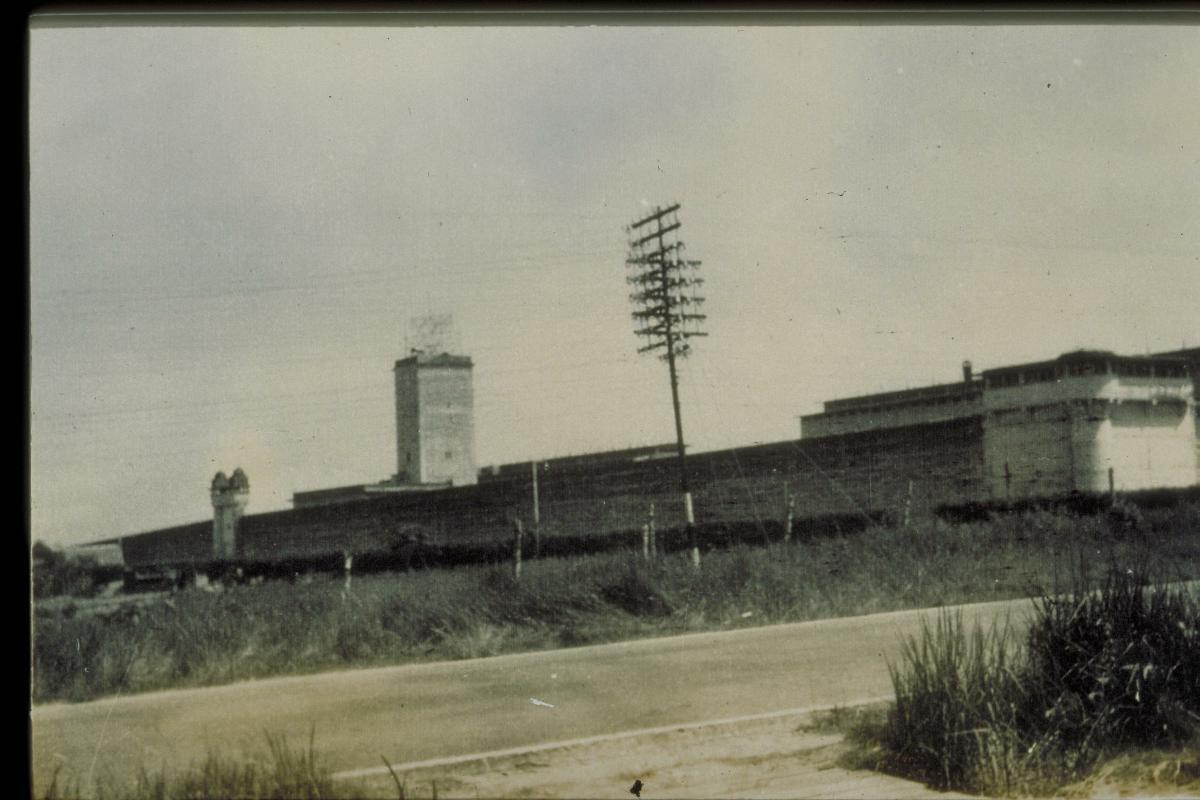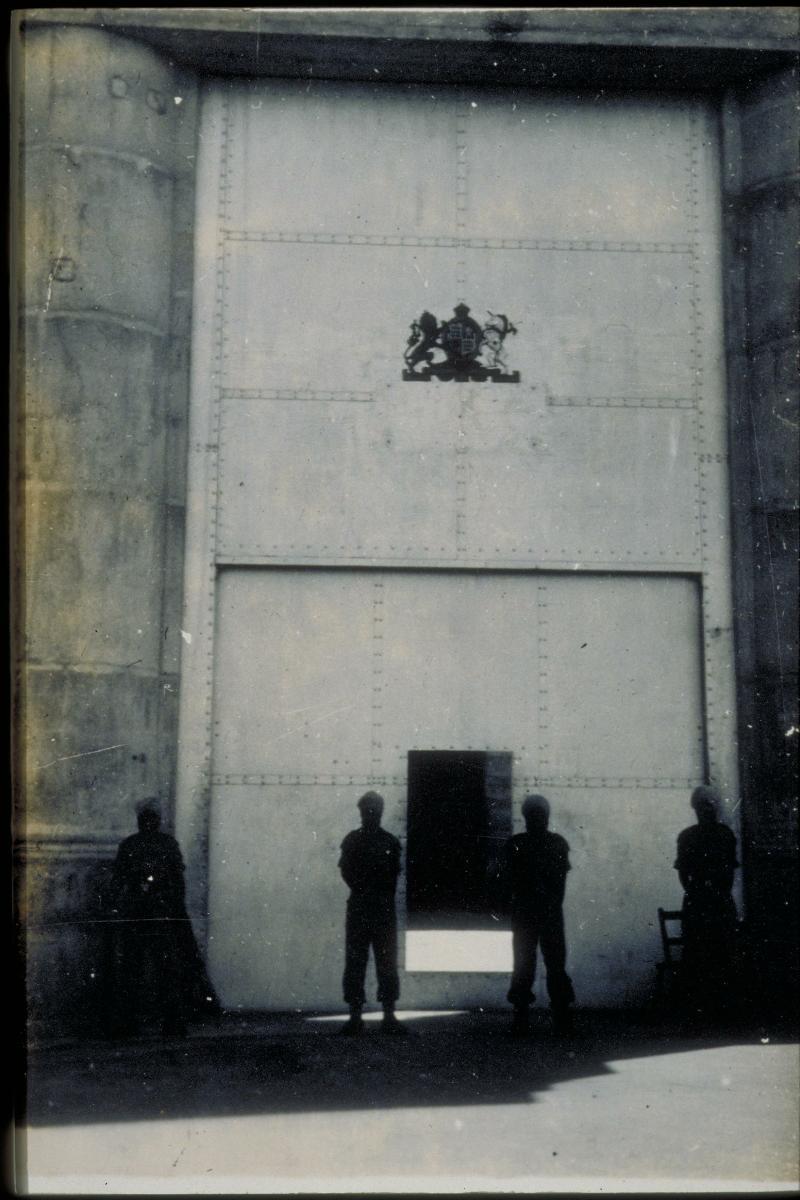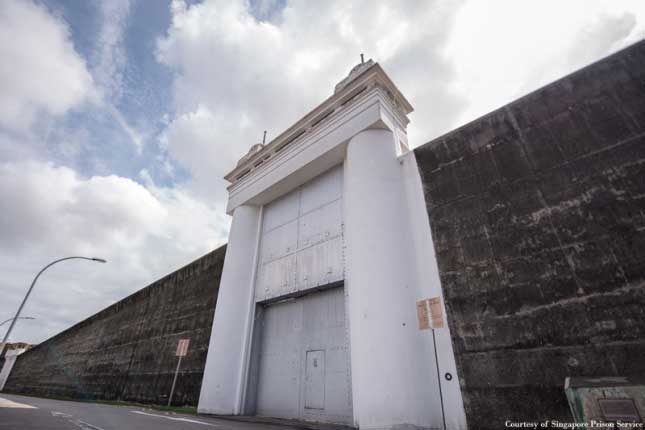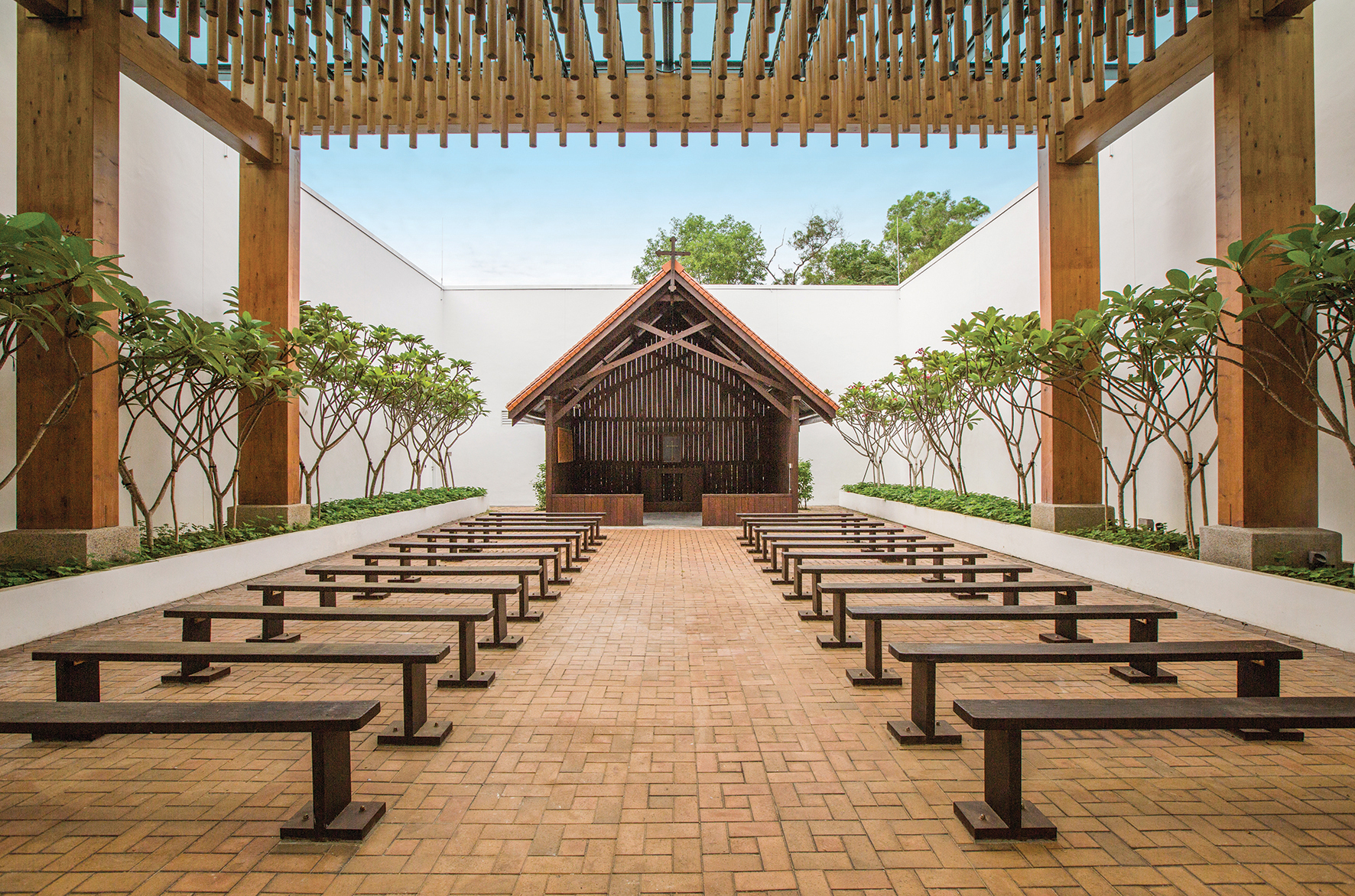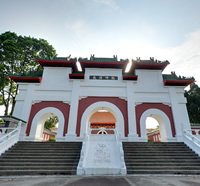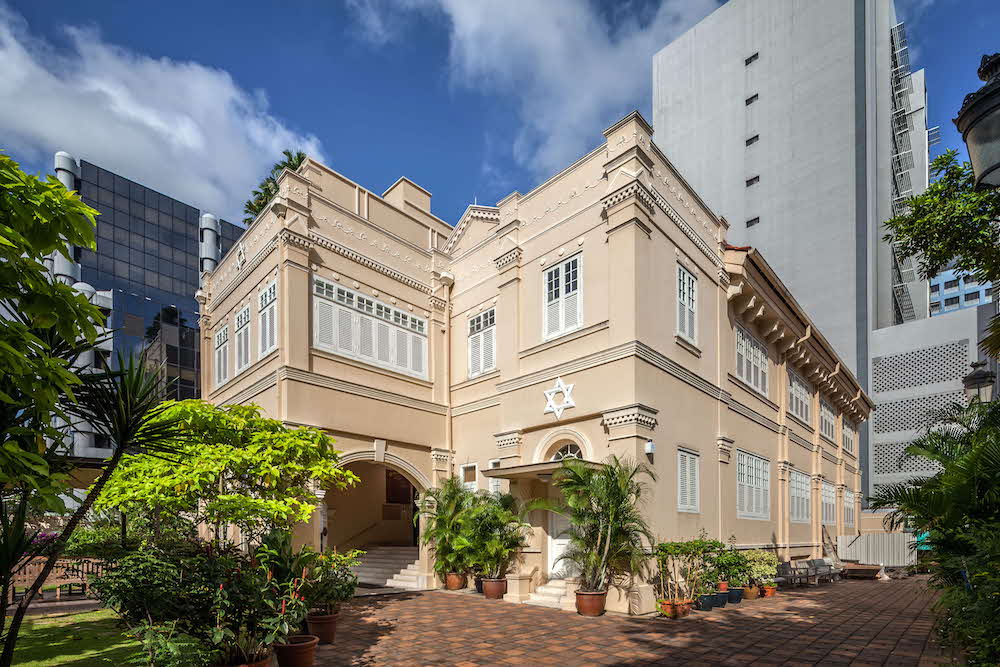Changi Prison cell door, Singapore, 1930s, metal.
Collection of the National Museum of Singapore.
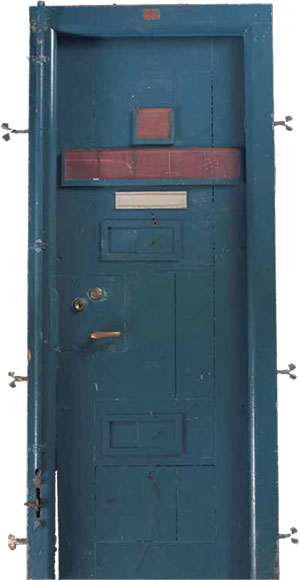
Changi Prison was built in the 1930s as a civilian prison for a few hundred prisoners. It was the last prison built by the British colonial government, and is best known for being an internment camp during World War II. During the Japanese Occupation, the prison became overcrowded. The Japanese used the prison, which was built to house only 600 prisoners, to intern a few thousand combatant and civilian prisoners of war. Governor Shenton Thomas and his wife, Lady Daisy Thomas, were among the internees held there.
The prison was also known for being the site where many trade unionists, suspected communists and political prisoners were held in the 1950s and 1960s following riots and civil unrest in the decade leading up to Singapore’s independence. Most of the prison, except for the 180-metre stretch of wall, two turrets and the entrance gate, were demolished in 2004 to make way for a new Changi Prison Complex. The wall, turrets and entrance gate were gazetted as a national monument in 2016.
This is an extract from "The Singapore Story through 60 objects" written by Kennie Ting, Director, Asian Civilisations Museum and Peranakan Museum & Group Director of Museums, National Heritage Board. This article was first published in Cultural Connections Volume IV 2019 by Culture Academy Singapore.
Learn more about World War 2 in this video series





